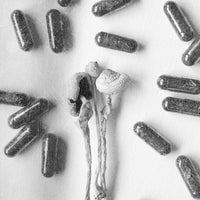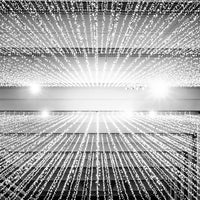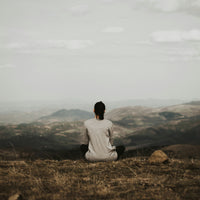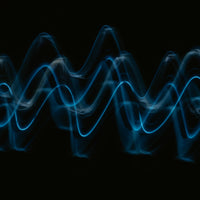In the year 1713, the Devil appeared before a violinist named Giuseppe Tartini. Offering musical teachings in exchange for Tartini’s soul, the Father of Lies played a melody that left the musician utterly entranced.
Upon awakening (yes, as you’ve probably figured out, this was a dream), Tartini attempted to recreate what he’d just heard. The result was a captivating violin piece commonly known as the Devil’s Trill Sonata. Whether or not it’s worth selling your soul for, there’s no denying its beauty.
Tartini is one of many composers who have written songs in their sleep. More recently, musicians like Jack White, Aphex Twin, Billy Joel, The Beatles, Black Eyed Peas, The Rolling Stones and Roy Orbison have crafted well-known songs from music and/or lyrics that they heard in dreams.
As a songwriter, I’ve experienced this phenomenon countless times, occasionally taking the time to record songs that I hear in my dreams. It goes without saying, though, that the same thing can happen outside the realm of music. For example, dreams have directly inspired writings by Charles Dickens and Robert Louis Stevenson. Filmmaker James Cameron got the idea for The Terminator from a fever dream. Jasper Johns, whom The New York Times named America’s foremost living artist in 2018, got the vision for his best-known painting from a dream.
Of course, you don’t have to be an artist in the traditional sense to have a lightbulb moment in your sleep. German chemist August Kekulé claimed that his discovery of the ring structure of benzene came from a dream in which he saw a snake eating its own tail. The vision for Google came to the company’s cofounder, Larry Page, in a dream. The Nobel Prize-winning insights of scientists like Dutch physicist Niels Bohr and German physiologist Otto Loewi came from dreams. So did game-changing innovations from golfer Jack Nicklaus and—if we’re to believe a widespread tale—sewing machine inventor Elias Howe.
The Sleeping Imagination
The stage of sleep in which the most vivid dreams occur—the REM phase—has been linked to cognitive flexibility. To put that less formally, the mind goes loosey-goosey during deep sleep, which can give rise to unorthodox thinking. This is associated with decreased activity in regions of the brain that block taboo thoughts—specifically those that defy social convention or accepted rationality.
I spoke with dream expert Deirdre Barrett, Ph.D., who says that during REM sleep we’re “casting a much looser net of associations, so [dreams] are especially likely to provide creative solutions in areas that benefit from visualization or thinking outside the box.”
In addition to teaching two courses on dreaming at Harvard, Barrett is a creator of dream-inspired art and the author of the books The Committee of Sleep and Pandemic Dreams. She spearheaded a 1993 study, which found a correlation between creative thinking and dream incubation. This is essentially the act of programming yourself to solve problems in your sleep. Creative powerhouses like writer Ariana Huffington and computer scientist/author Ray Kurzweil have sung the praises of this practice.
A different study contends that this particular kind of creativity comes from REM sleep itself.
“Creativity is inherent in our dreams,” Barrett says. “What dream incubation is so useful for is to focus a dream on a particular question or problem that we’d like to benefit from that creativity. But the creativity is already happening in our dreams—so best to pay attention.”
This, she adds, means writing down our dreams—or at least reflecting on them—upon awakening.
Microdosing Your Dreams
Between dreaming and waking, there’s hypnagogia: the hazy state of consciousness that you inhabit when you’re falling asleep or waking up from sleep, or when you’re sleep-deprived. A 103-participant study from 2021 suggested that this is “a creative sweet spot.” Researchers proposed that hypnagogia, and specifically the sleep onset phase, “presents an ideal cocktail for creativity.”
These researchers noted that at the start of sleep, the brain makes use of networks that are associated with creative cognition. They linked this neural activity to the microdreams one has at the onset of sleep, in which the dreamer creatively stitches together old memories with recent experiences from waking life, making for a Frankenstein’s monster-style hodgepodge of images and ideas.
That, by the way, is exactly how Frankenstein came to be. By author Mary Shelley’s own account, a hypnagogic microdream was the source of her vision for the famous patchwork behemoth to which she gave life.
Some other celebrated works of hypnagogia-derived art are The Beatles’ “Yellow Submarine,” which came to Paul McCartney while he was drifting off to sleep; Roy Orbison’s “In Dreams”; and (anecdotally) some of the most beloved brainchildren of Ludwig van Beethoven, Aristotle, Samuel Taylor Coleridge, Richard Wagner and Johannes Brahms. In the later part of an episode of the podcast Conan O’Brien Needs A Friend, Norah Jones also describes getting song ideas while falling asleep.
Outside of art, hypnagogia is said to have directly influenced the ideas and waking actions of Sir Isaac Newton and Mahatma Gandhi. As the latter wrote, it was in this “twilight condition between sleep and consciousness” that he conceived of a nationwide hunger strike to protest the freshly published Rowlatt Act.
By various accounts, Salvador Dalí, Edgar Allan Poe, Thomas Edison and Albert Einstein deliberately tapped the hypnagogic state by taking naps while clutching an object such as a key or steel ball. As they were falling asleep, their grip on that object would loosen, and the sound of it hitting the floor (or a plate that they’d left thereupon) would wake them. It is said that the inspirations for some of their most important works, insights and solutions to problems came from this practice.
Salvador Dalí recommended this hack in his book 50 Secrets of Magic Craftsmanship, calling the practice “slumber with a key.” The same technique was used in the 2021 study mentioned above.
A modernized version of this “slumber with a key” trick can be found in a glove-like contraption called Dormio. By tracking changes in biosignals, Dormio detects sleep onset and wakes its wearer up when he or she is dozing off.
Lucid Dreaming
Lucid dreams—the ones in which you’re aware that you’re dreaming—are close relatives of hypnagogic microdreams. The best-of-both-worlds combination of cognitive flexibility and relatively clear thought can be fertile ground for creativity.
One of the best-known examples of this is the film Waking Life, which was inspired by an extended lucid dream. A musician named Pete Casale also composed this song while lucid dreaming. Visual artists like Dustyn Lacas and Hanin Shaqsi use lucid dreams as the basis for their work. And for a NASA-funded study, scientist Bruce Damer conceived of a design for a manned lunar base while lucid dreaming.
Author and dream researcher Clare Johnson is the first person ever to hold a Ph.D. in the use of lucid dreaming for creativity. Along with writing several nonfiction books on that subject, she has used her expertise in this area to create the lucid dream-inspired novels Breathing in Colour and Dreamrunner.
In a study that Johnson conducted for her doctoral dissertation, lucid dreams proved successful in enhancing the creativity of writers and visual artists.
In consciousness researcher David Jay Brown’s book Dreaming Wide Awake, Johnson offers some imaginative tips on using lucid dreams for creativity. For instance, she recommends that during a lucid dream, we ask to be shown “something never created before” or simply “something amazing.”
In the same book, artist Daniel Love explains the practice of “fractal dreaming,” in which he jumps inside one of his preexisting paintings during a lucid dream to find new visions.
Dreaming Wide Awake also presents a variety of lucid dream induction techniques. These range from simple habits (such as periodically asking yourself, “Am I dreaming right now?” throughout the day, as suggested by lucid dream pioneer Stephen LaBerge) to the use of electronic technologies and oneirogens (psychoactive plants and chemicals that can induce or enhance dreamlike states).
Dream Potions
If you choose to use oneirogens, you’d do well to study up on the side effects of the supplement you’re planning on taking and to stick with the recommended dosages.
It’s also worth mentioning that certain pills have been specifically developed for lucid dreaming, designed to promote lucid dreams and dream recall.
Some herbs are also said to support lucid dreaming, more vivid dreams and improved dream recall.
Of course, none of this does you any good if you can’t get to sleep in the first place. Some adaptogens might help with that. Rooibos is often enjoyed before bed to help unwind from the day, and is well-known for relaxation support.
And with that, friends, I raise my mug in your direction. I wish you nourishing sleep and inspiring dreams.
Damon Orion is a writer, musician, artist, and teacher based in Santa Cruz, CA. He has written for Revolver, Guitar World, Spirituality & Health, Classic Rock, High Times and other publications. Read more of his work at damonorion.com.
Read More: Lucid Dreaming 101: What It Is and How to Go About It
Read More: How Quitting Coffee Brought Back My Dreams
Read More: What Is Your Body Doing While You Sleep?




